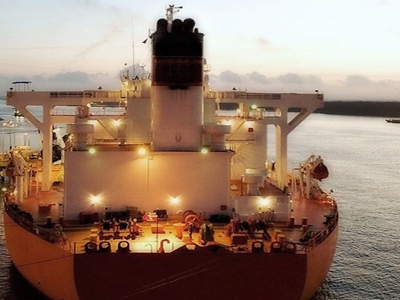COLREG requirements and limitations
Due to attempts to comply with the Singapore Strait recommendations to show three green all-round lights when crossing the Singapore Strait, therre have been lately unauthorised modifications of navigation lights. DNG GL has issued Technical Newsletter to to inform/refresh ship owners, managers and their crew about the COLREG requirements and limitations and also about the regulations applicable to vessels navigating the Malacca and Singapore Straits
According to information received from the Australian Maritime Safety Authority (AMSA), an alarming number of vessels passing Singapore have been observed to have illegal modifications of their COLREG navigation RAM/NUC lights.
Vessels have been observed with the RAM/NUC navigational lights’ globe or screen painted the wrong colour in order to comply with the Singapore Strait Traffic Separation Scheme (TSS). However, by doing so, the vessels are no longer in compliance with the COLREG RAM/NUC requirements.
These violations may have undesirable consequences. After these changes, the vessels can no longer display the correct COLREG lights, thus posing a serious threat to navigational safety due to the increased risk of collision. In addition, port authorities, such as AMSA, will detain vessels observed to have such illegal modifications.
|
In December 2010, IMO published new amendments to the “Rules for vessels navigating the straits of Malacca and Singapore” in SN.1/Circ. 293, and these took effect on 1 July 2011. Vessels crossing the Traffic Separation Scheme (TSS) and precautionary areas in the Singapore Strait during hours of darkness are recommended to display the night signals consisting of three all-round green lights in a vertical line. According to SN.1/Circ. 293, these green lights are to comply with the positioning and technical details of lights in Annex I of COLREG. In fact, this means that these lights should comply with all the requirements regarding their position in relation to the masthead lights, the limited amount of obstructions in their visibility sector and their height compared to the uppermost continuous deck. These requirements are difficult to comply with due to the large number of communication antennae, navigation lights and so on. Finding a suitable arrangement is morechallenging for ships which have not had these lights installed when they were built. |
Options for the fleet in service
If a vessel chooses to follow the Singapore Strait TSS recommendations when transiting the Singapore-Malacca Straits, it may have the following options:
|
Ship owners should inform their classification society when changes are made to the navigation light arrangement if the society is authorised by the flag administration. If the society is not authorised by the flag administration, then the owners should duly inform the flag administration of any changes to the navigation lights.
Source:DNV GL

































































